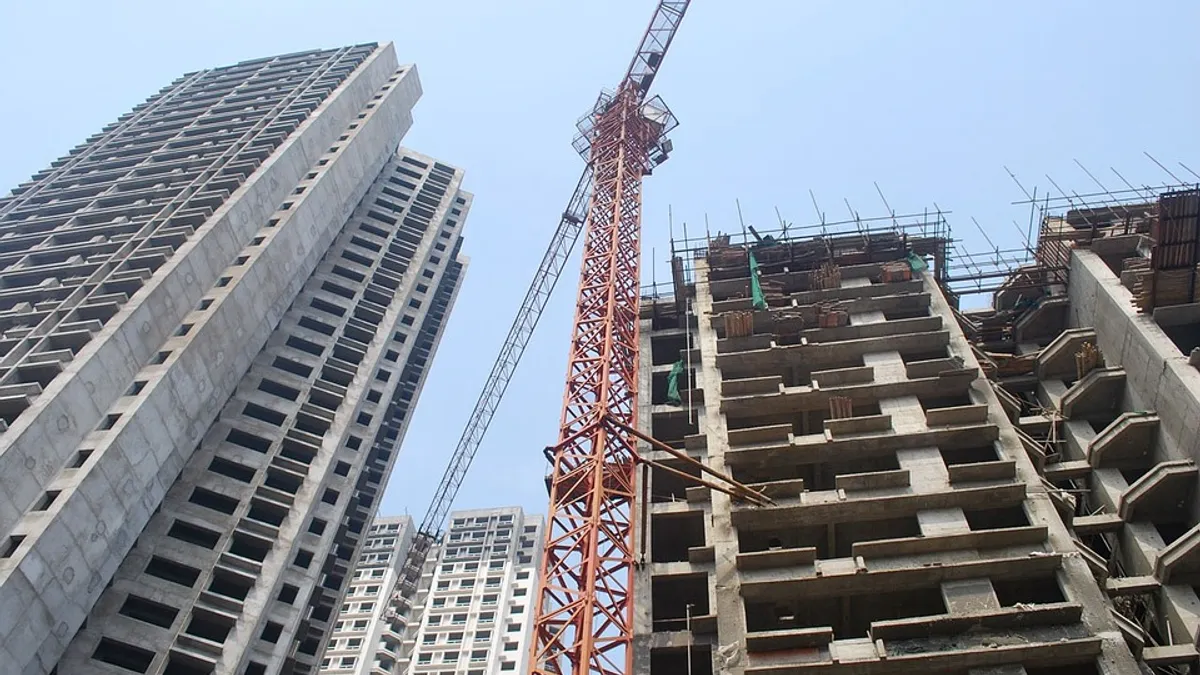Each Monday, we'll let you know what's coming in the week ahead, including important residential and commercial report releases, as well as our own feature articles.
Homebuilder confidence report — March 15
The National Association of Home Builders/Wells Fargo Housing Market Index will be released on Tuesday, March 15. Last month, the NAHB announced the index slipped three points in February to 58 after the upwardly revised January score of 61. All four U.S. regions posted declines in the three-month moving average HMI score.
The NAHB attributed February's dip in builder confidence to the ongoing problems of a lack of skilled labor and available land. "Builders are reflecting consumers' concerns about recent negative economic trends," NAHB Chief Economist David Crowe said in a release.
As the first in the month's stream of housing market reports, the builder confidence index will signal how the residential industry views current and future prospects.
"The Dotted Line" contract series: Design-bid feature article — March 15
In January, we launched our year-long series, "The Dotted Line," exploring facets of construction contracts each month. Our first installment delved into the pros and cons of guaranteed maximum price contracts, and our second installment looked at construction bonding.
This month, we turn our attention to design-build contracts. In our feature article on Tuesday, March 15, we will explore the pros and cons, its impact on billing and change orders, and whether there are certain types of projects that lend themselves to the method. We'll also ask experts what construction companies should keep in mind when using design-build to ensure a successful project outcome.
Producer Price Index — March 15
The monthly Producer Price Index report from the Bureau of Labor Statistics will be released on Wednesday, March 15. That afternoon, the Associated Builders and Contractors will offer their take on the data, and we'll cover both reports in a combined story.
Last month, construction material prices dipped 0.6% between December and January and 2.7% year-over-year. January marked the seventh-consecutive month of declines in construction industry inputs in the Producer Price Index.
ABC Chief Economist Anirban Basu attributed the continued slide in material prices to "a set of extraordinary circumstances" in the U.S. and global economies. Basu added that he expects construction input prices to remain low in the near future, as slow global economies will keep material costs down. And although declining prices bring their share of positives to construction companies in the midst of a building boom across the U.S., they are also causing significant damage to the energy sector and the states that rely on it.
Will the seven-month streak of monthly price decreases continue, or will material prices rebound after a long streak of declines?
Housing starts data — March 16
The Commerce Department will release housing starts data for January on Wednesday, March 16. Last month, the department announced housing starts slipped 3.8% in January to a 1.10 million annualized rate, down from a 1.14 million rate in December. Single-family construction saw the steepest decline in January, at 3.9%, and multifamily dropped 3.7%. January's overall starts fell to the lowest level in three months.
Experts attributed the decline to the severe winter storm on the East Coast in January, as well as reluctance from some buyers to take the leap into homeownership. The disappointing showing signaled that "there is a limit to how much gains in residential real estate will boost growth at the start of 2016," according to Bloomberg.
Will Wednesday's housing starts results offer positive news for the market after an unexpectedly low showing last month?
Living buildings feature article — March 17
Last month, we explored the growing movement of net-zero building — a status that requires a building, or group of buildings, produces as much energy as it consumes. From the proposed Bride of the Gulf in Basra, Iraq — which will be the tallest building in the world if completed — to Tesla's gigafactory in Reno, NV, the biggest players in building design and innovation are choosing the net-zero path.
This week, we will delve further into a green building standard that is even more difficult to achieve: living buildings. The ultimate standard in sustainability, these buildings are "intended to be examples of the highest level of environmental performance currently possible," according to the International Living Future Institute. In our feature article on Thursday, March 17, we'll talk with the organization responsible for living building certification, as well as those who have built these structures to learn more about the strict requirements and to find out why an owner would choose a living building.












